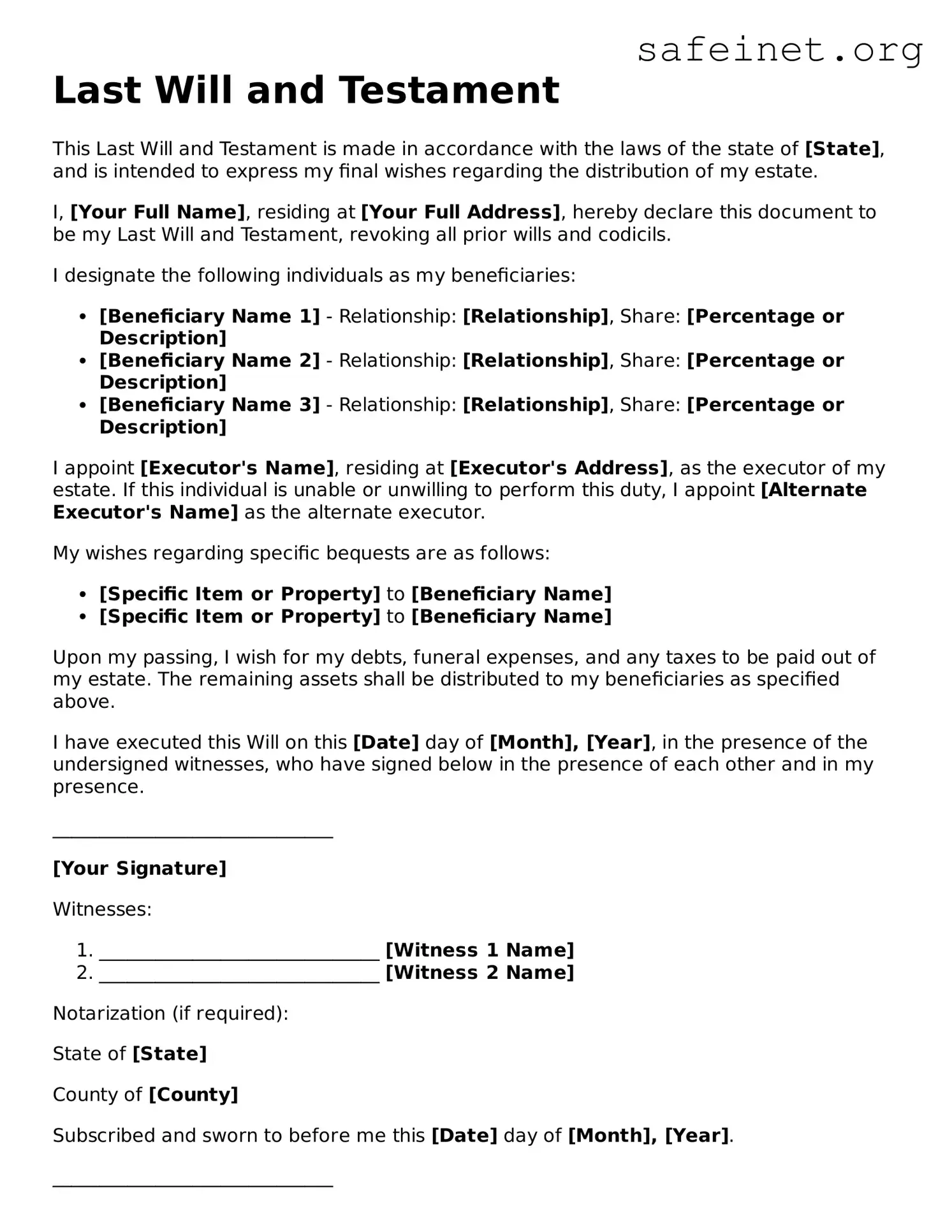The Last Will and Testament is closely related to a Living Will, which outlines an individual's healthcare preferences in the event they become incapacitated. Unlike a Last Will, which distributes a person's estate after death, a Living Will focuses on specific medical treatments or interventions a person wishes to receive or refuse. This ensures that an individual’s healthcare wishes are respected when they cannot voice them themselves.
Another document similar to a Last Will is a Trust. A trust can manage an individual's assets during their lifetime and after death. While a Last Will transfers assets through probate, a trust allows for the direct transfer of assets to beneficiaries, often avoiding the lengthy legal process. This provides more privacy and can facilitate quicker distribution of assets.
The Durable Power of Attorney is also akin to a Last Will, as it designates someone to make decisions on behalf of an individual if they are unable to do so. This can include financial or legal decisions, contrasting with a Last Will, which only takes effect after death. This document ensures that someone trustworthy manages your affairs during your lifetime, especially in times of incapacity.
An Advance Healthcare Directive shares similarities with a Last Will by addressing what happens when someone can no longer communicate their wishes. It combines the elements of a Living Will and a Durable Power of Attorney for healthcare, guiding medical decisions based on a person’s preferences, thus supporting their autonomy in medical settings.
Another comparable document is a Codicil, which serves as an amendment to a Last Will. A codicil can add, modify, or revoke provisions within an existing will. This offers a convenient way to update one’s intentions without having to create an entirely new document, maintaining clarity in the estate plan while reflecting changing circumstances or wishes.
A Revocable Living Trust has a significant relationship with a Last Will as it allows for the flexible management of assets during a person's lifetime. In many cases, a revocable trust can be dissolved or amended as life circumstances change. It serves a similar purpose in estate planning by passing assets, but generally offers greater control over asset distribution and can reduce complications after death.
A Bill of Sale is relevant in the context of transferring specific ownership of personal property, much like a Last Will distributes assets after death. This document is often used in transactions involving significant personal property, ensuring that the previous owner's consent is documented, thus setting clear expectations around ownership transitions.
In the same way, a Joint Tenancy Agreement concerns the joint ownership of property. It allows two or more parties to hold property together, with rights of survivorship. When one owner dies, the remaining owners automatically inherit their share. This can bypass the probate process similar to how a Last Will dictates the transfer of assets after a person's death.
A Family Limited Partnership can also relate to estate planning goals. This legal structure allows family members to own a business or property together, limiting their personal liability while enabling smooth transitions of ownership upon death. While a Last Will addresses individual estate distribution, a Family Limited Partnership focuses on the collaboration and management of shared family assets.
Lastly, a Prenuptial Agreement can intersect with a Last Will, particularly in how a person's assets are managed or distributed in the event of divorce or death. This agreement outlines each spouse's rights to assets acquired during the marriage, potentially affecting how those assets are eventually allocated in a Last Will, reflecting an individual’s wishes regarding their estate and partnerships.
